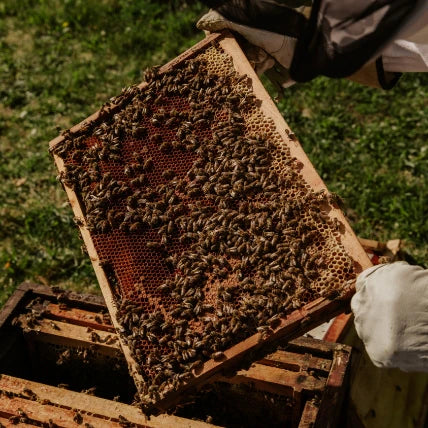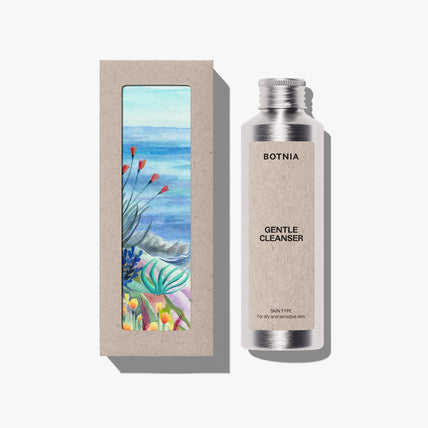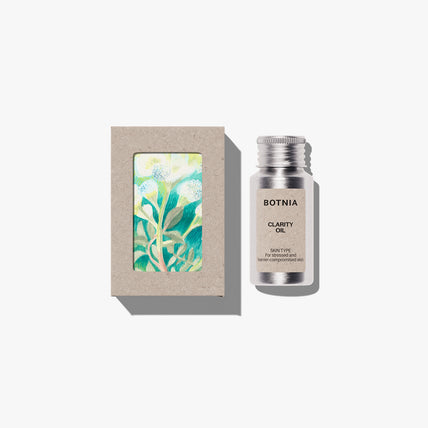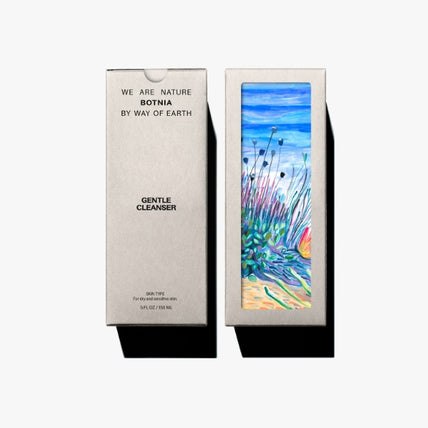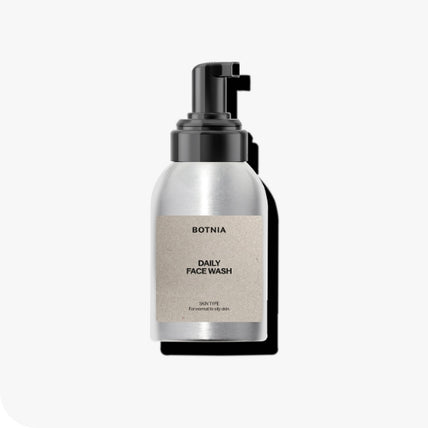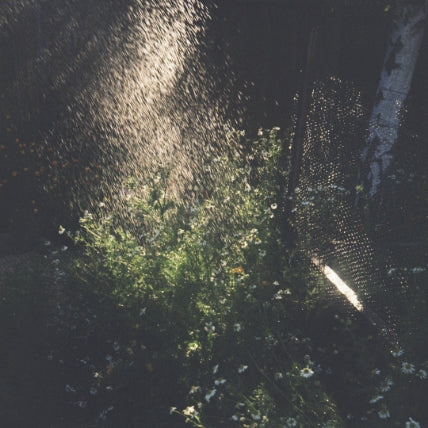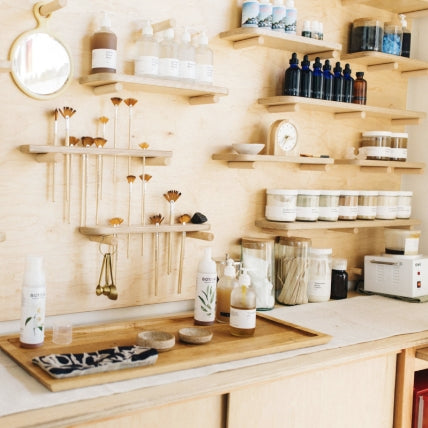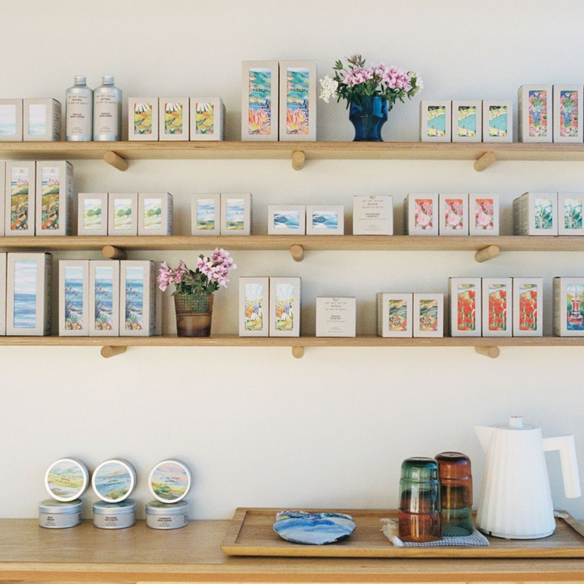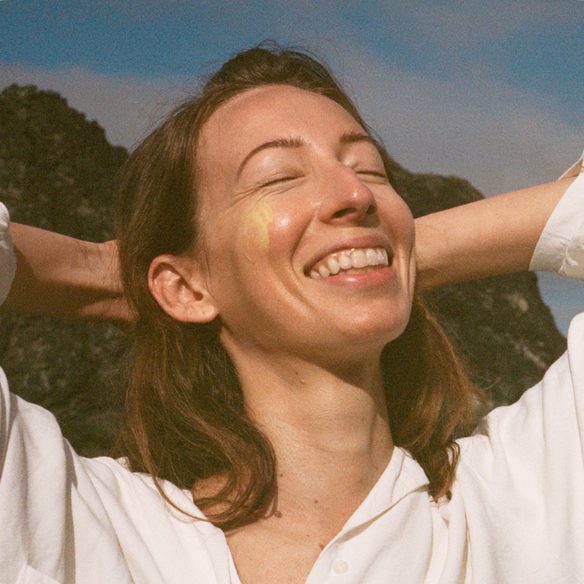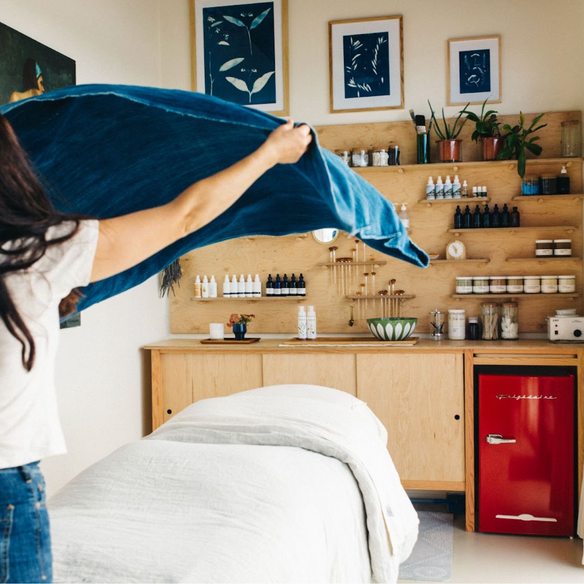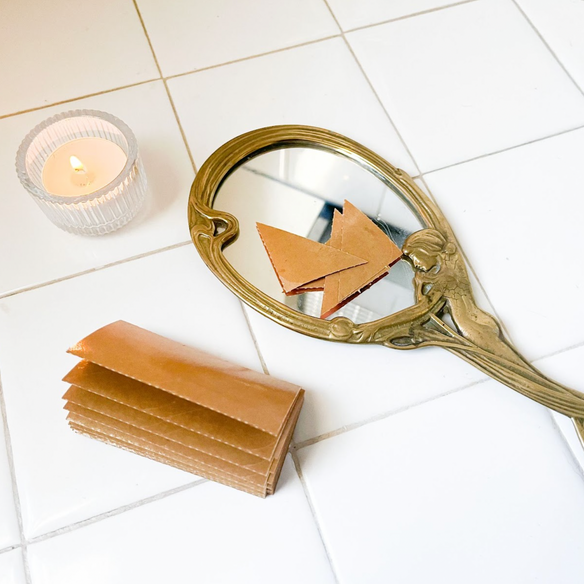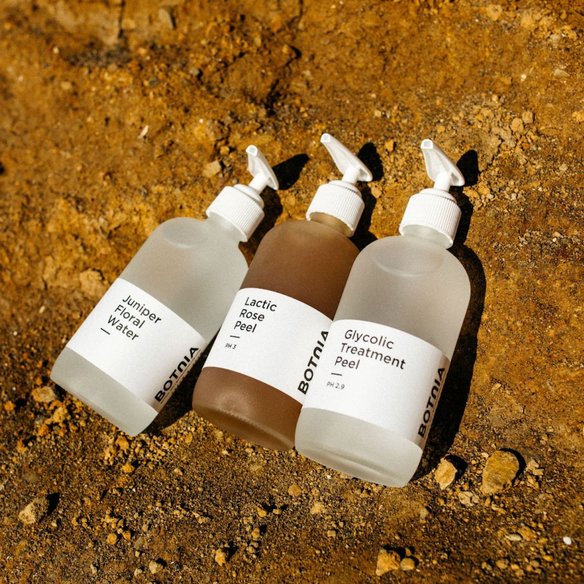
Botnia’s take on “Sephora Kids”
As a child, I watched my mother care for her skin—applying her creams, it seemed so adult woman to me, so sophisticated. Now with my mom in her seventies and me with a skincare line of my own, I watch her still—her hands a little softer, her skin a little wiser, but her ritual unchanged.
I have a nine-year-old daughter, and I see that same curiosity in her. Eve carefully picks out her outfits, experiments with hair accessories and earrings, and asks to wear makeup before we head out the door. She’s figuring out who she is, and I love watching that unfold. I see Eve watching me, studying the way I care for myself, just as I once did with my mother. It makes me think about what it means to pass this down—not just skincare, but the action of care we give ourselves.
In our home we don’t allow screens, so my daughter isn’t seeing beauty trends through the lens of social media. But for those raising kids in a world where ‘Sephora Kids’ is now a thing—where tweens are being marketed products they don’t need—it can feel like an uphill battle to let kids be kids.
As the founder of a skincare company and starting Botnia while Eve was still in diapers, I’ve watched this trend unfold. And while I love seeing kids take an interest in self-care, I also see the pitfalls of introducing unnecessary products too soon.
I want to share my perspective on what children’s skin actually needs, when to introduce skincare, and—more importantly—how to raise kids with a healthy relationship to beauty and self-care.
Children’s skin: Dos and don’ts
Kids’ skin is fundamentally different from adult skin. It’s resilient, plump, and naturally hydrated. Unlike adult skin, it’s not dealing with water loss, hormonal shifts, or environmental stressors in the same way.
What Kids Need:
A gentle cleanse (only when necessary). If they’re covered in dirt from the playground or experimenting with makeup, a mild cleanser like our Balancing Oil Cleanser is perfect—effective in removing dirt with a neutral pH that won’t strip their skin. And the travel size is perfect for little hands to use.
Hydration that’s light and fun. If they love the feeling of a “skincare step,” Rose Geranium Hydrosol is a beautiful way to introduce them to self-care without overwhelming their skin. A light mist, a deep breath—it’s more about ritual than necessity.
Sunscreen. Always. If there’s one non-negotiable, it’s SPF. A good mineral sunscreen is the best investment in lifelong skin health.
What They Don’t Need:
Harsh acne treatments—they aren’t yet experiencing an influx of hormones like in the teen years, and using strong ingredients can cause irritation, rashes, and worsening of acne. Their skin is learning to balance itself.
Exfoliants or active ingredients—acids, retinoids, or even essential oils can be too much for young skin. Using these ingredients too early can cause irritation or compromise the skin barrier.
“Anti-aging” anything—products made for adults are just not made or tested for young skin.
Perfume, scents, and pigments from an unregulated cosmetics industry can disrupt delicate skin and change hormones. Preteens’ skin is more permeable and still developing, so chemicals in synthetic fragrances, color additives, and harsh active ingredients can more easily penetrate and potentially disrupt hormone balance. Many of these additives aren’t well regulated, sometimes even containing hidden toxins (like phthalates or heavy metals), so sticking to gentle, fragrance-free products and minimal ingredients is best.
I try to be mindful of how I talk about aging, acne, and skincare around Eve. If we’re constantly picking apart our own skin, our kids will learn to do the same. Make skincare about care, not correction. If they’re interested, keep it light—a hydrosol spritz before school or a fun face mask during a sleepover.
I want my daughter to love the skin she’s in, not spend her childhood trying to fix something that isn’t broken. As parents, we have so much influence over how our kids see themselves. I remind her often: Your skin is beautiful because it’s yours.
When to Introduce a Real Skincare Routine
The tween years? Not necessary. But once puberty hits and they start dealing with oilier skin, clogged pores, or breakouts, that’s when a simple, supportive routine makes sense. I’ve written a guide to support teenage skin—you can find it here.
Let Kids Be Kids
We can teach kids how to care for themselves with kindness and show them that beauty isn’t about looking a certain way, but about feeling comfortable and confident in their own skin.
When they’re ready for skincare, we can help them build resilience against the unrealistic standards set by the beauty industry. We can give them the tools to see through marketing gimmicks, to recognize that self-worth isn’t tied to perfection, and to choose self-care over self-criticism.
But for now, let’s raise kids who feel good in their skin—not just today, but for life.
Xo,
Justine
